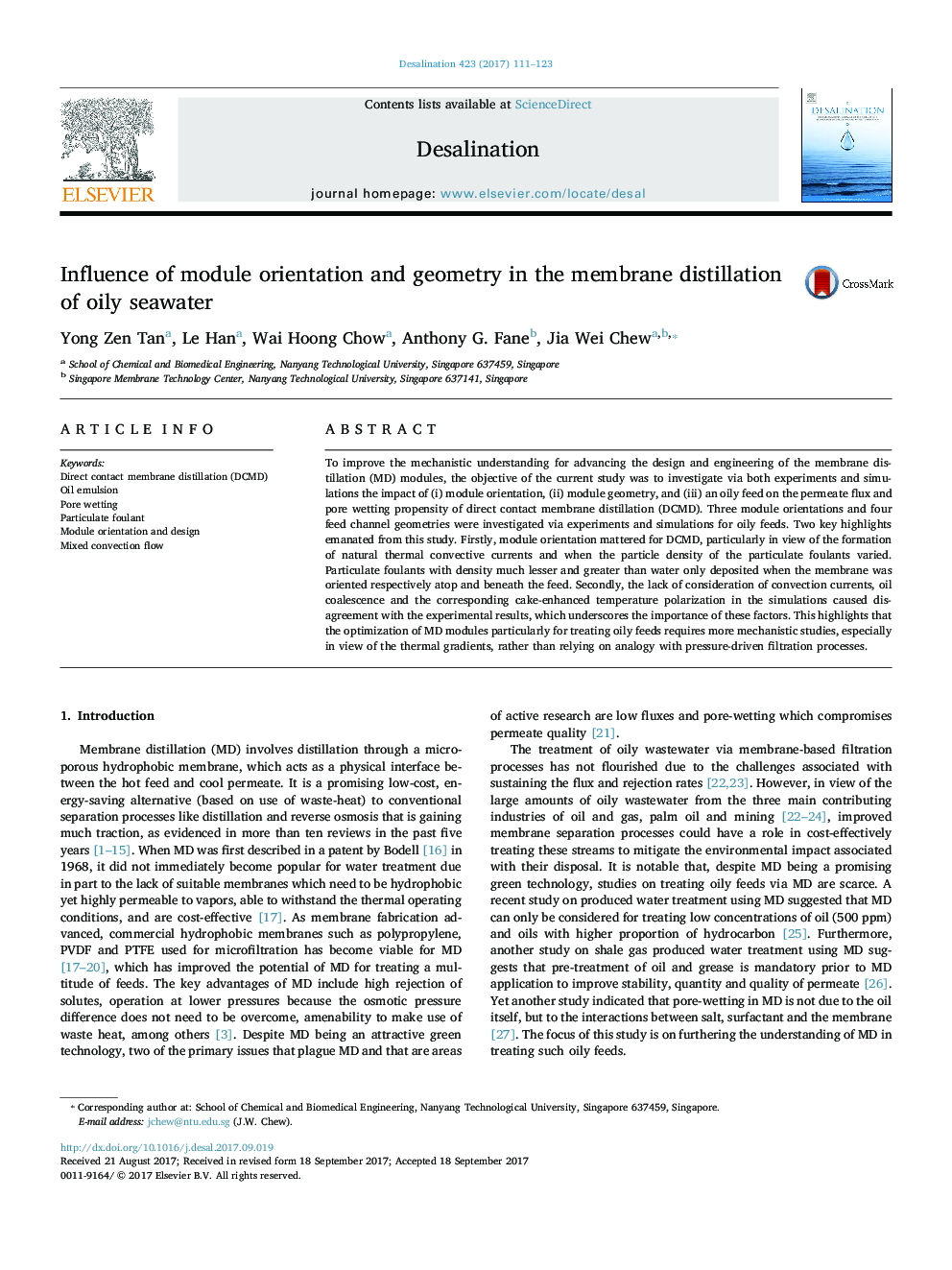| Article ID | Journal | Published Year | Pages | File Type |
|---|---|---|---|---|
| 4987531 | Desalination | 2017 | 13 Pages |
Abstract
To improve the mechanistic understanding for advancing the design and engineering of the membrane distillation (MD) modules, the objective of the current study was to investigate via both experiments and simulations the impact of (i) module orientation, (ii) module geometry, and (iii) an oily feed on the permeate flux and pore wetting propensity of direct contact membrane distillation (DCMD). Three module orientations and four feed channel geometries were investigated via experiments and simulations for oily feeds. Two key highlights emanated from this study. Firstly, module orientation mattered for DCMD, particularly in view of the formation of natural thermal convective currents and when the particle density of the particulate foulants varied. Particulate foulants with density much lesser and greater than water only deposited when the membrane was oriented respectively atop and beneath the feed. Secondly, the lack of consideration of convection currents, oil coalescence and the corresponding cake-enhanced temperature polarization in the simulations caused disagreement with the experimental results, which underscores the importance of these factors. This highlights that the optimization of MD modules particularly for treating oily feeds requires more mechanistic studies, especially in view of the thermal gradients, rather than relying on analogy with pressure-driven filtration processes.
Related Topics
Physical Sciences and Engineering
Chemical Engineering
Filtration and Separation
Authors
Yong Zen Tan, Le Han, Wai Hoong Chow, Anthony G. Fane, Jia Wei Chew,
